The N54 3․0L twin-turbo inline-6 engine pairs seamlessly with the GS6-53BZ 6-speed manual transmission, offering enhanced control and driving engagement, making it a popular choice for performance enthusiasts seeking a more connected experience․
1․1 Overview of the N54 Engine and Manual Transmission
The N54 engine is a 3․0L twin-turbo inline-6, known for its high performance and responsiveness․ Paired with the GS6-53BZ 6-speed manual transmission, it delivers precise control and optimal torque delivery․ The engine features forged internals and twin turbochargers, producing significant power and torque․ The manual transmission is lightweight, with a robust design to handle increased torque capacity․ Together, they offer a seamless driving experience, making the N54 a favorite for enthusiasts․ Compatible with models like the E90 and E92, this pairing requires specific components such as the 6-bolt flywheel and clutch kit for proper integration;
1․2 Importance of Manual Transmission for Performance
A manual transmission enhances driver engagement and control, making it vital for performance driving with the N54 engine․ Manual shifting allows precise gear control, optimizing power delivery and torque management․ This direct connection between driver and vehicle maximizes acceleration and handling, especially in high-performance scenarios․ Lightweight components and high-performance clutch kits further improve responsiveness, ensuring minimal power loss during shifts․ For enthusiasts seeking ultimate driving involvement, the manual transmission is indispensable, offering unparalleled control and exhilaration behind the wheel․

History and Development of the N54 Manual Transmission
The N54 engine, introduced in 2006, was paired with the GS6-53BZ 6-speed manual transmission, designed to enhance performance and driver engagement in BMW’s high-performance vehicles․
2․1 BMW N54 Engine Background
The BMW N54 engine, introduced in 2006, is a 3․0L twin-turbo inline-6 known for its high performance and efficiency․ It was paired with the GS6-53BZ 6-speed manual transmission, offering enhanced control and driving engagement․ The N54 gained popularity for its power delivery and responsiveness, making it a favorite among enthusiasts․ Its pairing with the manual transmission allowed drivers to exploit the engine’s capabilities fully, creating a dynamic driving experience․
2․2 Evolution of Manual Transmissions in BMW Vehicles
BMW’s manual transmissions have evolved significantly, with the GS6-53BZ 6-speed unit in the N54 engine being a prime example of this progression․ Designed for high performance, it offers precise shifting and improved torque capacity․ The integration of components like the flywheel, clutch, and shift linkage reflects advancements in engineering․ Over time, BMW refined manual transmissions to enhance driver engagement and efficiency, ensuring compatibility with high-power engines like the N54․ This evolution underscores BMW’s commitment to delivering exceptional driving experiences through innovative transmission design․

Key Components of the N54 Manual Transmission
The N54 manual transmission system features the GS6-53BZ unit, flywheel, clutch assembly, shift linkage, selector rod, driveshaft, and differential, ensuring smooth and precise gear engagement․
3․1 Transmission Housing and Gears
The GS6-53BZ transmission housing is constructed from durable materials, ensuring structural integrity․ Inside, its gears are precision-engineered for smooth, precise shifting․ The transmission features a 6-speed configuration, optimized for performance driving․ These components work together seamlessly to provide responsive acceleration and reliable operation․ Proper lubrication with high-quality manual transmission fluid, such as MT-90, is essential for maintaining gear health and smooth operation․ Regular maintenance ensures longevity and performance․
3․2 Clutch and Flywheel Assembly
The clutch and flywheel assembly is crucial for smooth power delivery in the N54 manual transmission setup․ A lightweight flywheel enhances throttle response, while the clutch kit ensures proper engagement․ The clutch and flywheel are designed to handle increased torque, especially in modified engines․ Proper alignment and installation are vital to avoid wear and ensure optimal performance․ Upgrading to high-performance kits can improve durability and drivability, making the system more responsive for enthusiasts seeking enhanced driving experiences․
3․3 Shift Linkage and Selector Rod
The shift linkage and selector rod are essential for precise gear changes in the N54 manual transmission․ These components connect the shifter to the gearbox, ensuring smooth and accurate engagement․ Proper alignment and lubrication are critical to prevent wear and maintain responsiveness․ Upgrading to short shifter kits can reduce throw distance, enhancing shift speed and driver engagement, making it a popular modification for performance-oriented drivers seeking quicker and more precise control over their vehicle’s transmission․
3․4 Driveshaft and Differential Integration
The driveshaft and differential are critical components for transferring power from the N54 manual transmission to the wheels․ The driveshaft must be compatible with the N54 engine and transmission, ensuring proper alignment and length․ The differential must also be configured to work seamlessly with the manual transmission, requiring specific gearing and axle ratios․ Proper integration ensures smooth power delivery and avoids damage to the drivetrain․ Modifications, such as extending the reverse switch wiring, may be necessary for a successful swap, ensuring all components function harmoniously together․

Benefits of Upgrading to a Manual Transmission
Upgrading to a manual transmission enhances driver control, improves fuel efficiency, and increases torque capacity, delivering a more engaging and performance-oriented driving experience for N54 enthusiasts․
4․1 Enhanced Driver Control and Engagement
Upgrading to a manual transmission with the N54 engine provides drivers with greater control and engagement, allowing precise gear shifts that optimize performance and responsiveness․ This setup enables drivers to fully utilize the engine’s power band, especially beneficial during spirited driving․ The direct connection between the driver and the vehicle enhances the overall driving experience, making it more immersive and enjoyable․ Additionally, manual transmissions often feature shorter shift throws and more defined gate positions, further improving driver involvement and satisfaction․
4․2 Improved Fuel Efficiency
Switching to a manual transmission with the N54 engine can lead to improved fuel efficiency, as drivers can optimize gear shifts according to driving conditions․ Manual transmissions typically consume less fuel than automatics by eliminating unnecessary torque converter slippage․ ECS Tuning offers lightweight components like high-performance clutch kits, which enhance efficiency further․ Additionally, the ability to control RPMs precisely allows for better fuel economy, especially in city driving or during consistent highway speeds, making the manual transmission a practical choice for performance and economy․
4․3 Increased Torque Capacity
Upgrading to a manual transmission with the N54 engine allows for increased torque capacity, especially when paired with high-performance clutch kits and lightweight flywheels․ The GS6-53BZ transmission is designed to handle the twin-turbo engine’s power output effectively․ ECS Tuning offers components like twin-disc clutches, rated for up to 890 ft-lb, ensuring optimal performance for high-torque applications․ This setup not only enhances acceleration but also improves the overall driving experience, making it ideal for both street and track use while maintaining reliability and drivability․

Compatibility and Fitment
The N54 manual transmission is compatible with BMW models like the E90 and E92 335i, requiring specific parts for 6-bolt or 8-bolt crankshafts․ Year-specific considerations apply․
5․1 Compatible BMW Models (E90, E92, etc․)
The N54 manual transmission is primarily compatible with the E90 and E92 335i models, which were originally equipped with the 6-speed manual gearbox․ These models, particularly the 2007-2008 variants, are ideal for N54 manual transmission swaps due to their mechanical compatibility and shared drivetrain components․ The E90 sedan and E92 coupe chassis are well-suited for the GS6-53BZ transmission, ensuring a seamless integration with the engine and drivetrain system․
5․2 Differences in 6-Bolt vs․ 8-Bolt Crankshaft
The N54 engine features two crankshaft variants: the 6-bolt and 8-bolt designs․ The 6-bolt crankshaft is used in models produced after January 2009, while the 8-bolt version is found in earlier models (2007-2008)․ The 8-bolt crankshaft offers greater strength and torque capacity, making it preferred for high-performance applications․ Compatibility with the GS6-53BZ transmission depends on the crankshaft type, requiring specific flywheel and clutch configurations to ensure proper mating and operation․
5․3 Year-Specific Considerations (2007-2008 vs․ 2009+)
Year-specific differences in the N54 engine affect manual transmission compatibility․ Models from 2007-2008 feature an 8-bolt crankshaft, while 2009+ models use a 6-bolt crankshaft․ The 2007-2008 models are preferred for manual transmission swaps due to the 8-bolt crankshaft’s higher torque capacity and easier integration with the GS6-53BZ transmission․ Post-2009 models require additional modifications, including flywheel and clutch upgrades, to accommodate the 6-bolt design, ensuring proper fitment and functionality without compromising performance․
Parts and Accessories for Manual Transmission Swap
The essential components include the GS6-53BZ transmission, a compatible flywheel, clutch kit, pedal assembly, wiring harness, and transmission mounts․ These parts ensure a seamless manual transmission conversion for the N54 engine․
6․1 GS6-53BZ Transmission Unit
The GS6-53BZ is a 6-speed manual transmission designed for compatibility with the N54 engine, offering smooth gear engagement and durability․ It is a direct-fit solution for E90 and E92 models, requiring minimal modifications․ This unit includes essential features like the input shaft and selector rod, ensuring proper integration with the engine and drivetrain․ When sourced from a 2007-2008 model, it pairs seamlessly with the N54’s 6-bolt crankshaft, making it a cost-effective and reliable choice for manual transmission swaps․
6․2 Flywheel and Clutch Kit
A lightweight flywheel paired with a high-performance clutch kit is essential for the N54 manual transmission swap․ Designed to handle increased torque, these components ensure smooth engagement and improved acceleration․ Kits are available for both 6-bolt and 8-bolt crankshafts, ensuring compatibility with various model years․ Lightweight options reduce rotational mass, enhancing throttle response and driving dynamics․ Many kits include a clutch alignment tool for seamless installation, making them a critical part of the manual transmission upgrade for enhanced performance and reliability․
6․3 Pedal Assembly (Clutch and Brake)
The clutch and brake pedal assembly is a vital component for the N54 manual transmission swap, enabling precise control over gear shifts and braking․ This assembly includes the master and slave cylinders, ensuring consistent hydraulic pressure for smooth clutch operation․ Designed to fit seamlessly into the vehicle’s existing pedal setup, it maintains ergonomic comfort while enhancing performance․ Upgraded units are available for improved feel and durability, making it a crucial upgrade for drivers seeking optimal control and responsiveness in their manual transmission-equipped BMW․
6․4 Wiring Harness and Electrical Components
The wiring harness and electrical components are critical for integrating the manual transmission into the vehicle’s electrical system․ A custom or modified harness ensures compatibility with the N54 engine and manual transmission controls․ Key components include the clutch switch, reverse light switch, and transmission control module․ Proper wiring modifications, such as extending the reverse switch wires, are often required for compatibility․ Ensuring all electrical connections are precise guarantees smooth operation of the manual transmission and related features, making it essential to use an OEM or high-quality aftermarket wiring harness for reliability and performance․
6․5 Transmission Mounts and Crossmember
Transmission mounts and the crossmember are essential for securing the manual transmission in place, ensuring proper alignment and stability․ Polyurethane mounts are recommended for their durability and resistance to wear, offering a balance between performance and comfort․ The crossmember must be compatible with the manual transmission setup, often requiring specific brackets or adapters․ Upgrading these components enhances the overall drivetrain rigidity, reducing vibrations and improving the driving experience․ Proper installation and alignment are crucial to maintain optimal performance and prevent premature wear on the transmission and surrounding components․
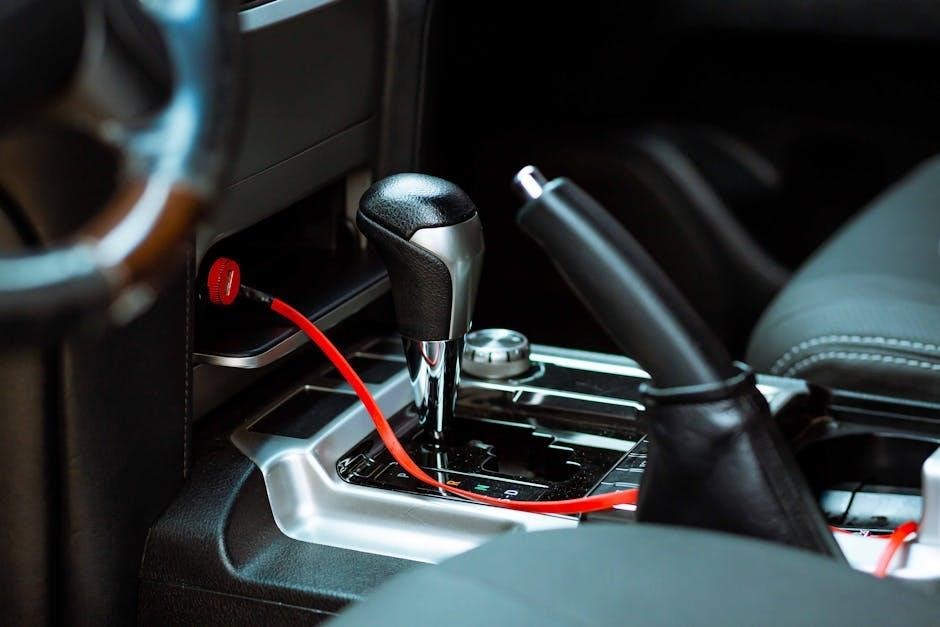
Installation and Setup
Installing the N54 manual transmission requires a comprehensive parts list, including the transmission, flywheel, and clutch․ Wiring harness configuration and mechanical setup ensure proper functionality and integration with the engine․
7․1 Preparing the Vehicle for Manual Transmission Swap
Preparing your vehicle for an N54 manual transmission swap involves removing the automatic transmission and associated components․ This includes disconnecting the wiring harness, draining transmission fluid, and safely supporting the vehicle․ Ensure all necessary tools and replacement parts are available, such as the GS6-53BZ transmission, flywheel, and clutch assembly․ Proper organization and planning are crucial to streamline the process and avoid complications during installation․
7․2 Removing the Automatic Transmission
Removing the automatic transmission requires careful disconnection of the torque converter, transmission mounts, and electrical connectors․ Draining the transmission fluid beforehand prevents spills․ Use a transmission jack to safely lower the unit once all connections are severed․ Ensure the driveshaft is properly supported and mark alignment points for reinstallation later․ This step is critical to avoid damage to surrounding components and ensure a smooth transition to the manual setup․
7․3 Installing the Manual Transmission
Align the GS6-53BZ manual transmission with the engine’s bellhousing, ensuring proper fitment․ Bolt the transmission securely, then install the driveshaft, making sure it aligns with the differential․ Connect the shift linkage and electrical connectors, extending wires for the reverse switch if necessary․ Ensure the clutch pedal assembly is integrated correctly․ Finally, secure the transmission mounts and crossmember to stabilize the unit․ Refer to a comprehensive parts list, such as those from ECS Tuning, to ensure all components are included for a seamless installation․
7․4 Configuring the Wiring Harness
When configuring the wiring harness for the N54 manual transmission swap, ensure the reverse switch wires are extended by 6-8 inches to accommodate the switch’s location on the opposite side of the transmission․ Properly connect the engine wiring harness to the manual transmission module, integrating the clutch switch and ensuring the reverse light circuit functions correctly․ Verify all electrical connections, including those for the transmission control and sensors, to prevent errors․ Consult a wiring diagram specific to your vehicle to guarantee accurate configuration and avoid system malfunctions․
7․5 Driveshaft and Differential Installation
Installing the driveshaft and differential for the N54 manual transmission involves aligning the driveshaft with the transmission output shaft and securing it with the appropriate hardware․ The rear differential must be properly seated and bolted in place, ensuring correct alignment with the driveshaft․ Use the provided transmission mount crossmember to stabilize the setup․ Tighten all bolts to the specified torque to prevent vibration and ensure reliable power delivery․ After installation, test the system to confirm smooth operation and proper engagement of the drivetrain components․
7․6 Clutch Pedal and Brake Pedal Assembly
Assembling the clutch and brake pedal system involves mounting the pedal box securely, connecting the master and slave cylinders, and ensuring proper alignment with the firewall․ The clutch switch and cable must be accurately routed and attached to the transmission․ Hydraulic lines should be bled to eliminate air bubbles, ensuring smooth clutch operation․ Proper adjustment of the pedal height and free play is crucial for optimal performance․ Test the system to ensure the clutch engages and disengages seamlessly, providing precise control over the manual transmission․
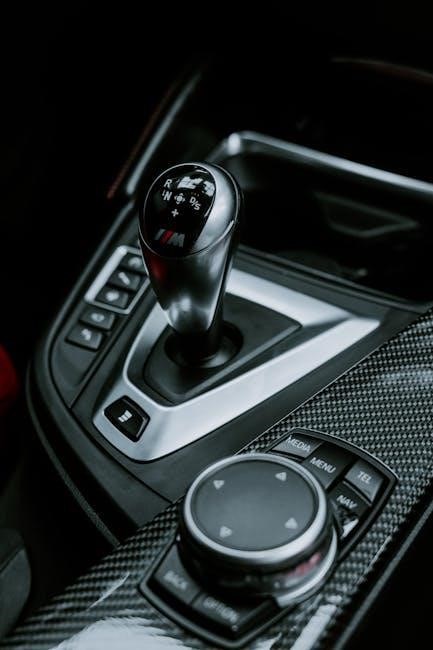
Maintenance and Servicing
Regular fluid checks and transmission servicing are essential for the N54 manual transmission․ Use MT-90 or 75w90 gear oil for optimal performance․ Replace the clutch and inspect gearbox components periodically to ensure smooth operation and prevent wear․
8․1 Transmission Fluid Recommendations
For the N54 manual transmission, use high-quality gear oils like MT-90 or 75w90, designed for optimal lubrication and heat resistance․ These fluids ensure smooth shifting and protect components from wear․ Regular fluid checks are essential to maintain performance and prevent premature gearbox damage․ Synthetic options are recommended for enhanced durability and thermal stability․ Always consult the manufacturer’s guidelines for the best fluid choices and change intervals to keep your transmission running smoothly․
8․2 Clutch Replacement and Inspection
Regular inspection of the N54 clutch is crucial for optimal performance․ Signs of wear, such as slippage or spongy pedal feel, indicate replacement․ Use high-quality clutch kits, like twin-disc setups, for enhanced torque capacity․ Always pair with a lightweight flywheel for improved responsiveness․ Ensure proper alignment during installation to prevent uneven wear․ Inspect the clutch master and slave cylinders for leaks or damage․ Replacing worn components promptly prevents costly repairs and maintains smooth, precise gear engagement, essential for both daily driving and high-performance applications․
8․3 Gearbox Lubrication and Seals
Proper lubrication is essential for the N54 manual transmission to ensure smooth operation and prevent premature wear․ Use high-quality transmission fluids like MT-90 or 75w90, recommended for their excellent lubricating properties․ Regular fluid changes, typically every 30,000 to 60,000 miles, are crucial․ Inspect seals and gaskets during servicing to prevent leaks․ Replace worn or damaged seals promptly to maintain transmission integrity․ Always follow manufacturer guidelines for lubrication and seal replacement to ensure optimal performance and longevity of the gearbox․
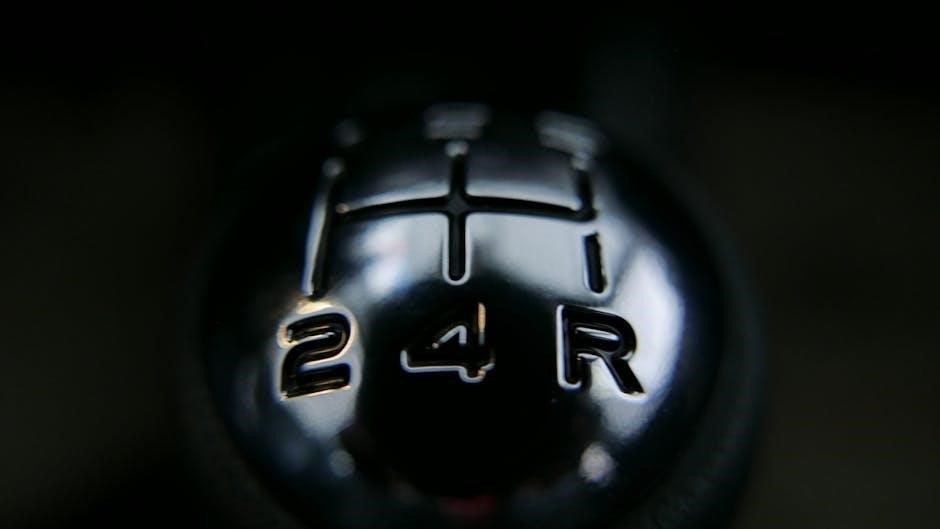
Common Issues and Troubleshooting
The N54 manual transmission can experience leaks, clutch slippage, and synchronizer wear, often due to high mileage or aggressive driving․ Regular inspections and timely repairs are essential․
9․1 Transmission Leaks and Repair
Transmission leaks are common in the N54 manual setup, often stemming from worn seals or gaskets․ The input shaft seal and output shaft seal are prone to failure, especially with high mileage or aggressive driving․ Repair typically involves replacing the faulty seals and inspecting for any damage to the housing․ Proper lubrication with high-quality transmission fluid, such as MT-90 or 75w90, can help prevent premature wear; Regular maintenance is crucial to avoid costly overhauls and ensure smooth performance․
9․2 Clutch Slippage and Wear
Clutch slippage and wear are common issues in high-performance N54 manual transmissions, especially under aggressive driving or high-torque modifications․ Symptoms include increased engine RPM without proportional speed gain and a spongy pedal feel․ Prolonged slippage can overheat the clutch, accelerating wear․ Upgrading to a high-performance clutch kit, such as twin-disc setups, is recommended for heavy-duty applications․ Regular inspection of the clutch and flywheel is crucial to prevent premature failure․ Proper alignment during installation and consistent fluid levels also help maintain optimal clutch performance and longevity․
9․3 Synchronizer and Gear Engagement Problems
Synchronizer and gear engagement issues in the N54 manual transmission often arise from worn-out synchronizer rings or damaged gear teeth․ High-mileage transmissions may experience these problems due to excessive wear․ Symptoms include grinding gears during shifts, difficulty engaging gears, or a “crunching” sensation․ Upgrading to high-performance synchronizers or replacing the entire gearbox can resolve these issues․ Regular transmission fluid changes and avoiding aggressive shifting practices help extend component life․ Early diagnosis is crucial to prevent further damage and costly repairs․
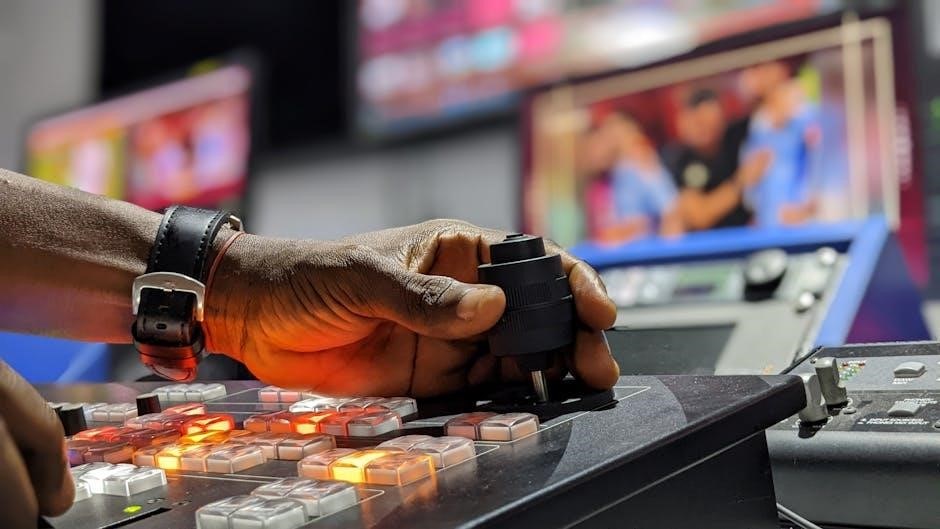
Performance Upgrades and Modifications
Enhance your N54 manual transmission with high-performance clutch kits, lightweight flywheels, and short shifter kits for faster, smoother shifts and improved driving dynamics․ These upgrades boost both power and precision․
10․1 High-Performance Clutch Kits
High-performance clutch kits for the N54 manual transmission are designed to handle increased torque and provide superior grip․ Options include a 9-inch twin disc organic clutch, rated for 890 ft-lb, ideal for street use, and a ceramic version for 1350 ft-lb, suited for high-performance applications․ These kits are compatible with 6-bolt crankshaft engines and require a lightweight flywheel for optimal performance․ Upgrading the clutch enhances acceleration and reduces slippage, making it a must for modified engines; Choose the right kit based on your driving style and power goals․
10․2 Lightweight Flywheel Options
Lightweight flywheels for the N54 manual transmission are engineered to reduce rotational mass, enhancing throttle response and acceleration․ Designed for high-performance applications, these flywheels are compatible with 6-bolt crankshafts and work seamlessly with upgraded clutch kits․ They are typically paired with twin-disc clutches, offering improved torque capacity and heat resistance․ A lightweight flywheel is a critical upgrade for drivers seeking quicker revs and better drivetrain efficiency, making it a popular modification for performance-oriented builds․
10․3 Short Shifter Kits for Faster Shifts
Short shifter kits are a popular upgrade for the N54 manual transmission, reducing shift throw by up to 30% for quicker and more precise gear changes․ Constructed from high-quality materials like stainless steel and polyurethane, these kits enhance shifting quality without increasing noise․ They are designed to work seamlessly with the existing transmission linkage, offering a more engaging and sporty driving experience; This upgrade is ideal for track use and spirited driving, where every millisecond counts, making it a must-have for performance enthusiasts․
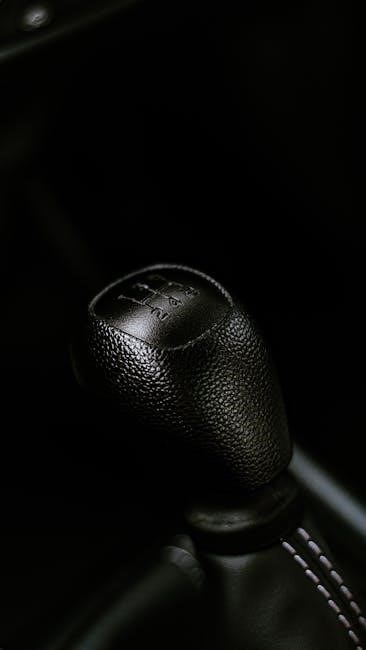
Cost Considerations
Upgrading to an N54 manual transmission involves significant costs, including parts like the GS6-53BZ transmission, flywheel, and clutch kit, plus labor for installation and wiring modifications․
11․1 Parts and Labor Costs
The GS6-53BZ manual transmission itself can range from $4,200 to $6,000, depending on mileage and condition․ Additional components like the flywheel, clutch kit, and pedal assembly add $899 to $1,200․ Wiring harness modifications and driveshaft installation further increase costs by $500 to $1,000․ Labor fees for professional installation typically range between $1,500 and $2,500, depending on the shop’s rates․ Overall, a complete manual transmission swap can cost between $6,000 and $10,000, making it a significant financial commitment․
11․2 DIY vs․ Professional Installation
A DIY manual transmission swap for the N54 engine is feasible but requires mechanical expertise․ Tools and specialized knowledge are necessary, as improper installation can lead to costly repairs․ Professional installation ensures precision and reliability, especially for complex components like wiring harness modifications․ While DIY saves labor costs, it risks errors and safety issues․ Professionals charge $1,500 to $2,500 for labor, balancing convenience and quality․ Choose based on skill level and desired outcomes for optimal results․
12․1 Final Thoughts on the N54 Manual Transmission
The N54 manual transmission swap offers a transformative driving experience, combining enhanced control with the robust performance of the 3․0L twin-turbo engine․ Enthusiasts benefit from improved torque capacity and responsiveness, making it a rewarding upgrade for E90 and E92 models․ A comprehensive parts list, including the GS6-53BZ transmission, flywheel, and clutch assembly, ensures compatibility and reliability․ Proper installation and year-specific considerations are crucial for optimal results․ The N54 manual transmission remains a beloved choice for drivers seeking a more engaging and powerful connection to their vehicle․
12․2 Future of Manual Transmissions in Performance Cars
While automatic and dual-clutch transmissions dominate modern performance cars, the manual transmission remains a niche yet cherished option․ Enthusiasts value the tactile engagement and control offered by manuals, even as technology advances․ The N54 manual transmission exemplifies this, with its 6-speed design providing a direct connection between driver and engine․ Despite declining popularity, manuals are likely to persist in specialized performance vehicles, catering to purists who prioritize driving involvement over convenience․ Upgrades like lightweight flywheels and high-performance clutches ensure manuals stay relevant in high-torque applications․